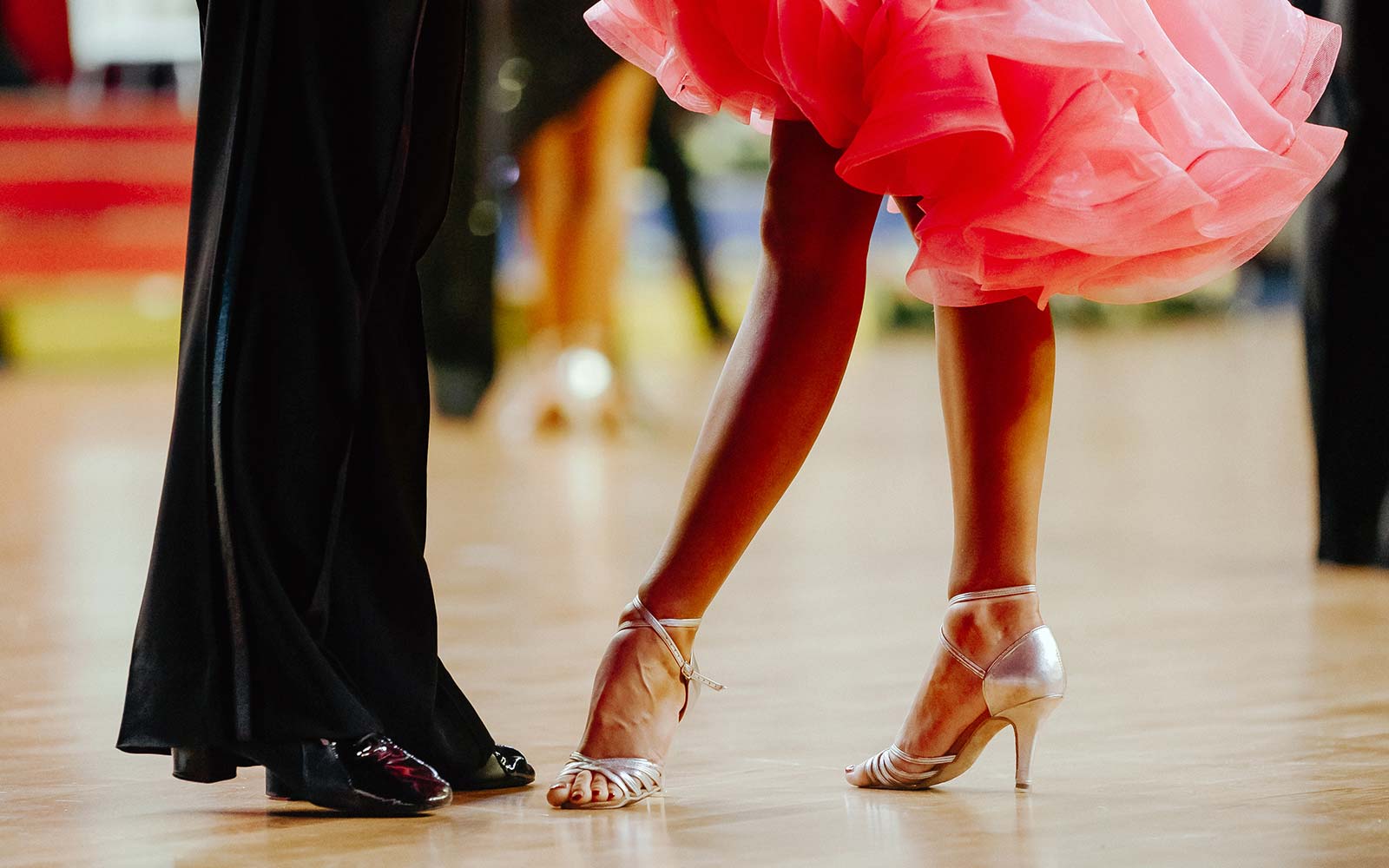Back when social dancing was still a thing (nice that it’s starting to come back to life after Covid), Wendy and I would regularly take to the dance floor at places like dine and dance venues. We would dance only the most basic figures, with no special embellishments or styling, basically beginner groupings. Yet people would come up to us after, saying that we must be professionals.
A couple of weeks ago I was dancing with several ladies at a social dance event. My partners had different skill levels and I didn’t push the boundaries in any way. Afterwards a woman stopped me in the parking lot to say that in watching the dancing she thought I was an artist on the floor, someone clearly more skilled than the others. I asked her why she had that impression and she couldn’t articulate it. To her, there was just something that looked different from the other dancers.
That leads to the obvious question: What is it that makes teachers or high-level dancers look like “professionals” compared to others on the floor, even when they are dancing the most basic figures?
There’s a lot to unpack in that question. I thought it was worth exploring a few of the things that differentiate a skilled dancer from others.
Confidence
I think the most obvious, and perhaps the most significant difference is that of confidence. A beginner, which I was at one point in my life, has little or no confidence. You can fake it to an extent, but it’s a hard thing to hide because it shows in so many ways. Usually this is broadcast by the dancer looking down at the floor. Even if the eyes are up, there’s a blank “thousand yard stare” that shows the person is thinking like crazy. Compare that to the radiant smile of an experienced champion and the difference is startling.
I once took a great photo of WDSF champion Paolo Bosco, dancing a Tango with Silvia Pitton, as he winked at the screaming female fans cheering him on in front of me. Confidence is incredibly magnetic!
A few years ago, I took part in a fund raiser event organized by Dancing With the Stars alumni Louis van Amstel. I was partnered with celebrity Mary Zilba of the television show Real Housewives of Vancouver. She was a raw beginner and had such a busy schedule that her daily dance lesson was a brief part of every fully packed day, making it hard for her to focus on her dance. While she had a lot to learn about dancing, her confidence was off the scale. Celebrities at that level can’t imagine failing at anything. As a result, she was able to sell her performance with astonishing impact, purely through her self confidence. I was impressed. I can teach someone for a year and they wouldn’t have the confidence Mary had after a week.
Confidence can be described as belief in yourself, the idea that you know you are good at something. Obviously, this comes with experience. Over time, dancers spend less time thinking about the mechanics of dance, which means they can focus on other things. At first, a raw beginner can barely understand where to place the feet. Never mind the details of footwork like heels and toes! After a while, the placement of the feet become natural. At that point, the dancer can think about details like rise and fall. Then they can start thinking about dynamics of posture, body flight and rotation. Eventually those things become more natural and the dancer can focus on arm styling and more sophisticated aspects of posture like stretch. But some things, like what the hands are doing, might still be forgotten until a certain point in time when even the details of what you’re doing with your hands can be applied while you are dancing. Only at the very last stage can dancing be so automatic that you can put all your energy into expression — how you present your energy, responding to the people around you, and musical interpretation. This includes things like winking at your fans.
Fluidity
Probably second in terms of what others notice is the fluidity of your movement. Beginner dancers have a kind of clunkiness as they move, and that’s because they are challenged to think of anything beyond where to place the feet. With that taking up all their mental energy, there’s no room left to fluidly and smoothly transition from one foot to the other. Over time, as placement of the feet becomes second nature, dancers are able to put effort into moving fluidly. Eventually, they learn to use natural forces like gravity and centrifugal force to create even more dynamic movement. Even an intermediate-level dancer will lack the fluidity of a truly skilled dancer. Experience provides a more sophisticated understanding of dynamic balance and use of energy which makes everything smoother and more stable looking. As a result, intermediate dancers will make high-level figures look clunky, while the high level dancer will make anything they dance look amazing.
Dancers should move on to learn more challenging figures. But too often I see people, especially competitors, wanting to move up to high-level figures long before they are ready for them. Watching a bronze-level competitor attempting open routines can be painful. First learn to perfect the bronze figures before moving on to gold figures and open styling!
Musicality
While untrained dancers might have no idea whether a couple is dancing on time to the music, there’s a difference between those who do and those who don’t. Dancing on time to music just looks more natural, even to people who know nothing about musicality. Likewise, a highly skilled dancer will use the subtle differences in musical phrasing to modify their choreography or movements to tie the dancing more closely to the music. For example, a highly skilled dancer will utilize the subtle “a1” on every 1 beat in Tango music, while other dancers don’t even hear it. Someone using the full 1 beat in Cha Cha looks completely different from someone blending the 4& into the 1 beat to create 3 steps of equal time value. Skilled dancers will make Viennese Waltz look slow and elegant by properly dragging the moving foot on beat 3, while lesser dancers will rush that action and pop up in the process.
Finishing the Lines
Another thing that sets skilled dancers apart on any dance floor is that they will finish their lines. Details such as pointed toes make a huge difference that even untrained onlookers can see. Energy needs to extend all the way through the fingertips during arm movements. In Smooth, it might be details like the shape of the arms which then extend out to the hands and fingers. In Paso Doble, details like Flameco finger actions while shaping the arms are evidence of skill. Obviously these aspects of dance can only be applied when you are experienced enough that you no longer have to think about other details, because it is hard to think about what your fingertips are doing if you’re still trying to figure out whether you need to use a heel or toe!
Presentation
This is not the same as confidence, though it is related. Presentation involves all those subtle things that make a couple enjoyable to watch. It includes posture, the way the partners interact with each other as they dance, the way they take on the character of the dance, their smiles or intensity of expression. When I watch a Rumba, I want to see the couple act as if they are passionate about each other even if they aren’t romantically involved. It helps me to enjoy the dance I’m seeing and to immerse myself in the story. I love to see small touches, like the lady touching the man’s chest or neck, or the man running his hands gently around the lady’s waist as she turns. These things are all part of the presentation of the story and things that generally don’t happen with inexperienced dancers.
These are just some of the things that stand out to others when a couple is dancing. They are the things that make dancing so captivating to watch. If you are a beginner, don’t worry about not being there yet, but set some goals for yourself. And if you’re an experienced dancer, ask yourself if you are spending too much of your energy on things that you’ve already mastered. If so, change your focus to new things that will help move you forward in your dancing.














